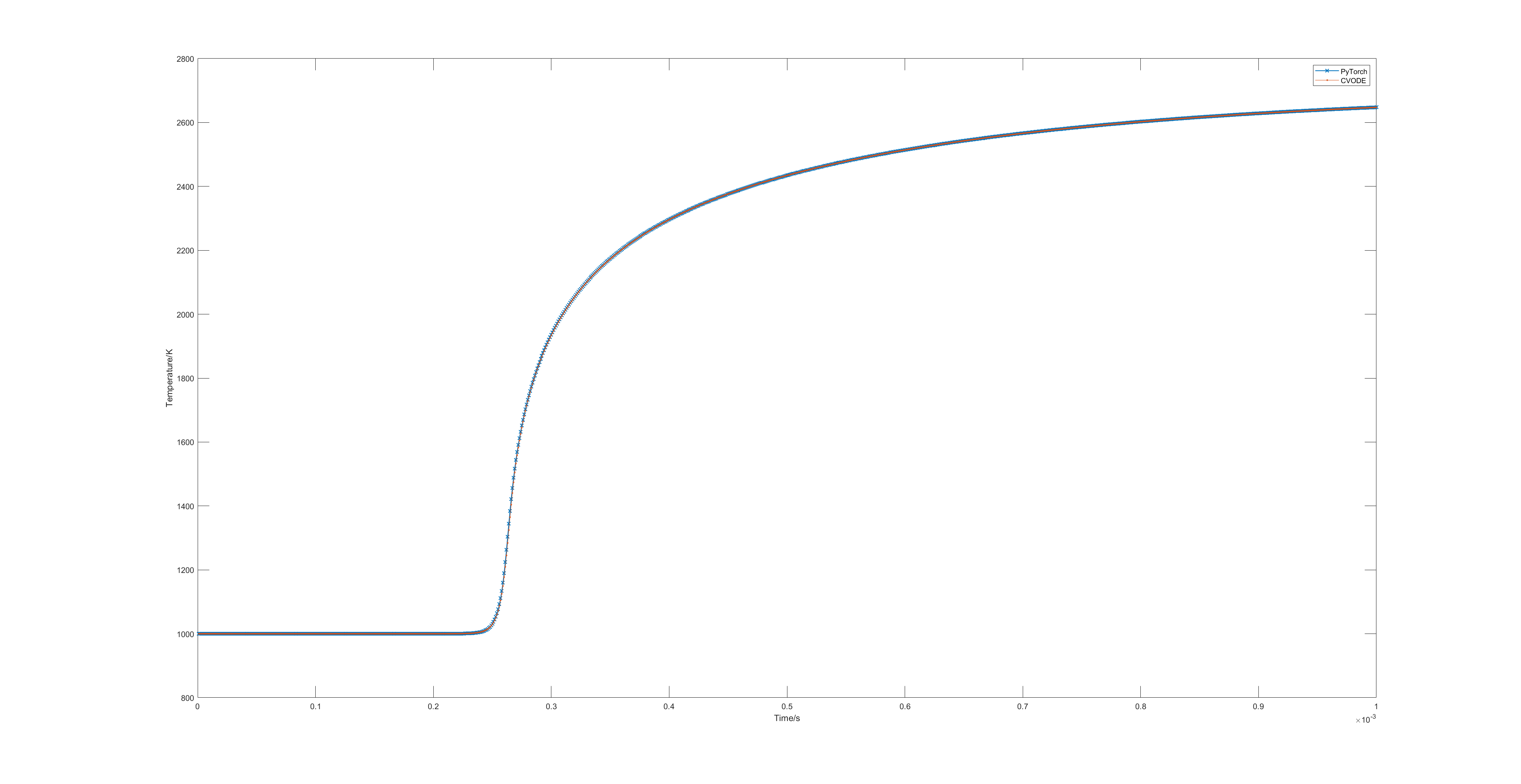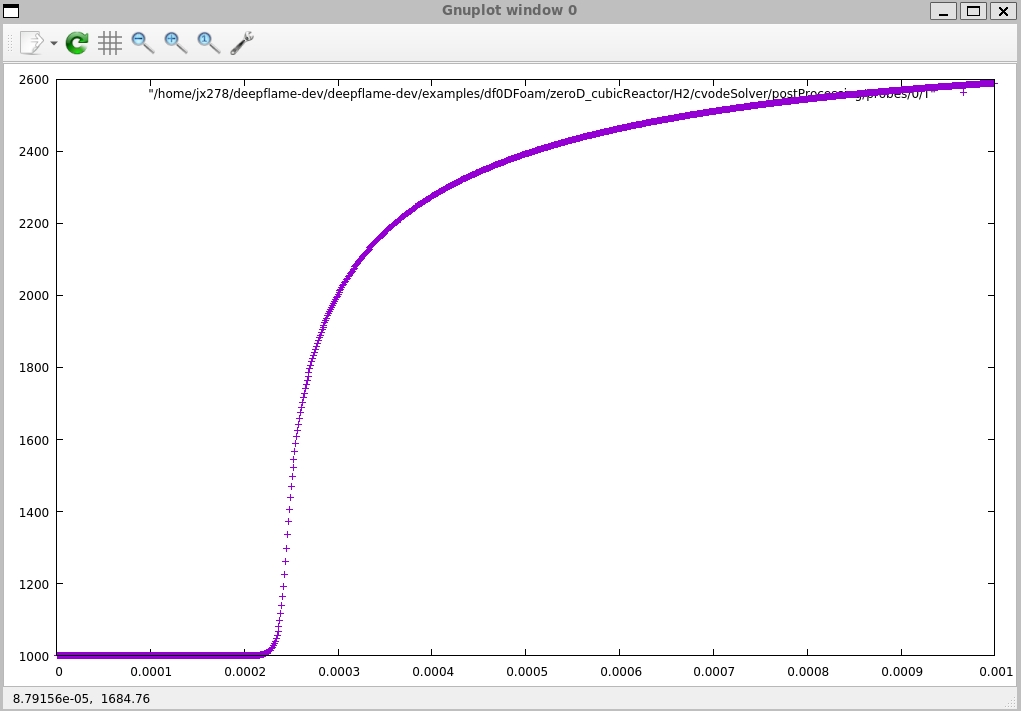3. Two Examples
3.1. DeepFlame with DNN
If you choose to use PyTorch as the integratgor and use the compilation flag –use_pytorch, you can run examples stored in $HOME/deepflame-dev/examples/…/pytorchIntegratgor. To run an example, you first need to source your OpenFOAM:
source $HOME/OpenFOAM/OpenFOAM-7/etc/bashrc
Then, source your DeepFlame:
source $HOME/deepflame-dev/bashrc
Next, you can go to the directory of any example case that you want to run. For example:
cd $HOME/deepflame-dev/examples/df0DFoam/zeroD_cubicReactor/H2/pytorchIntegratgor
This is an example for the zero-dimensional hydrogen combustion with PyTorch as the integrator. Networks used are stored in the mechanisms folder, and the inference file is inference.py. Configurations regarding DNN are included in constant/CanteraTorchProperties.
The case is run by simply typing:
./Allrun
Note
Users can go to constant/CanteraTorchProperties and check if torch is switched on. Switch it on to run DNN cases, and switch off to run CVODE cases.
If you plot PyTorch’s result together with CVODE’s result, the graph is expected to look like:

Visualisation of 0D results from PyTorch and CVODE integrators
3.2. DeepFlame without DNN
CVODE Integrator is the one without the application of Deep Neural Network (DNN). Follow the steps below to run an example of CVODE. Examples are stored in the directory: .. code-block:: bash
$HOME/deepflame-dev/examples
To run these examples, first source your OpenFOAM, depending on your OpenFOAM path:
source $HOME/OpenFOAM/OpenFOAM-7/etc/bashrc
Then, source your DeepFlame:
source $HOME/deepflame-dev/bashrc
Next, you can go to the directory of any example case that you want to run. For example:
cd $HOME/deepflame-dev/examples/df0DFoam/zeroD_cubicReactor/H2/cvodeIntegrator
This is an example for the zero-dimensional hydrogen combustion with CVODE integrator.
The case is run by simply typing:
./Allrun
The probe used for post processing is defined in /system/probes. In this case, the probe is located at the coordinates (0.0025 0.0025 0.0025) to measure temperature variation with time. If the case is successfully run, the result can be found in /postProcessing/probes/0/T, and it can be visualized by running:
gnuplot
plot "/your/path/to/postProcessing/probes/0/T"
You will get a graph:

Visualisation of the zero-dimensional hydrogen combustion result with CVODE integrator